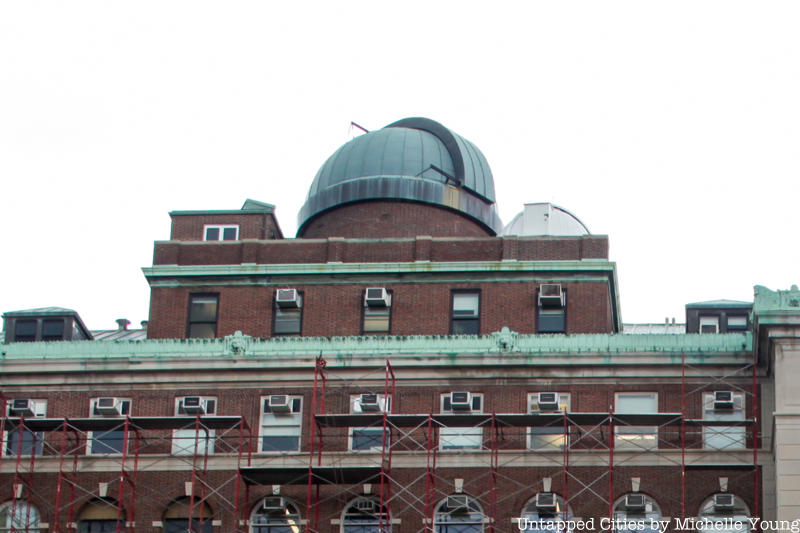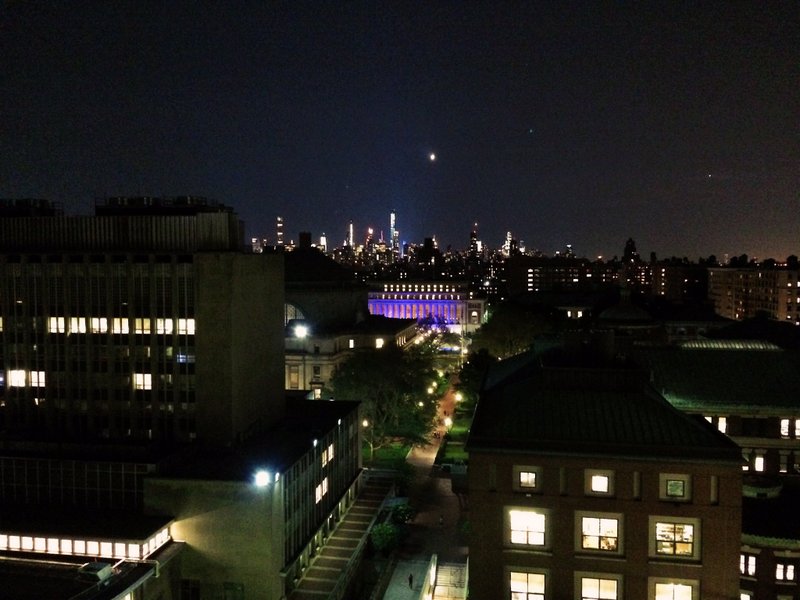
Don’t let New York City’s bright lights fool you: it is possible to see the stars even in an illuminated city like this if you know where to look. One such vantage point is Columbia University’s Rutherfurd Observatory, where, on every other Friday night, the Columbia Astronomy Public Outreach series allows New Yorkers to peek through the smog while standing on a piece of science history.
The Rutherfurd Observatory is located on the roof of Pupin Physics Laboratories, where the university’s science and astronomy courses take place. This building carries more than just academic significance, though. In 1965, the United States Department of Interior designated Pupin as a national landmark because of the groundbreaking research that happened in the building: Pupin was where the FM Radio was created and where the first atom was split.
 View from atop Pupin Hall during a stargazing event. Photo courtesy Jenny Lam
View from atop Pupin Hall during a stargazing event. Photo courtesy Jenny Lam
The observatory itself housed a refractor telescope originally built by an American company in 1916 for the Russian government to observe an upcoming solar eclipse. However, shipment processes ceased until after World War I, and Columbia bought the telescope in 1920 after it sat unused in a warehouse. Around 60 years later, the South Carolina State Museum bought the refractor telescope because it no longer functioned properly and became too burdensome to store.
Now, every other Friday during the academic year, the observatory hosts a public lecture series by members of Columbia’s astronomy department, followed by 90 minutes of stargazing if the weather permits. During the summer months, a sci-fi movie and discussion replaces the lectures, and stargazing takes place in front of Pupin. Learn more about the Columbia Astronomy Public Outreach summer events here.
Get in touch with the author @evelynyettikim.





